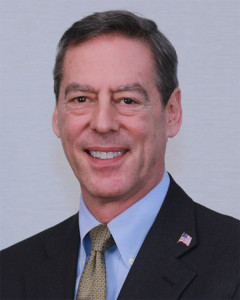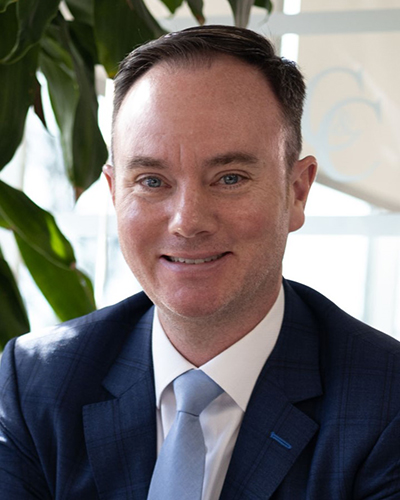Building value with these top green building trends for commercial real estate in 2016 by Steven Schleider
The green building groundswell the real estate industry is experiencing might best be described by writer Victor Hugo: “There is nothing more powerful than an idea whose time has come.”
It has, of course, taken time for going green to gain its current momentum. Only a decade or so ago, green was still more novelty than necessity, more marketing than maximizing ROI, more “should do” than know how to do it.
To see how quickly green has come into its own, according to the U.S. Green Building Council (USGBC), in 2012, 41% of nonresidential building starts were green, as opposed to 2% in 2005. That is extraordinary progress in seven short years. For 2015, the USGBC anticipated 40% to 48% of new nonresidential construction would be green.
Today, it is no longer an issue of whether to go green but more a question of where and how to maximize the benefits from energy savings to water conservation, recycling, enhanced workplace health and productivity, attracting and retaining a higher quality of tenant and, not the least, adhering to the growing number of local, state and federal laws mandating everything from reporting energy usage to handling construction waste.
What then will be the top green commercial building trends of 2016?
The number of buildings seeking LEED ratings (gold being the most widely popular) will continue to increase dramatically. There are LEED rating bashers out there, as well as those who question whether LEED is enough. But, for now, the answer is yes it is and will continue to be. The “L” in LEED stands for Leadership and LEED standardization took a global leadership position when it revolutionized green building with measureable standards for best-in-class building strategies and practices.
We will be seeing more cool roofs and green roofs. Cool roofs, achieved by using foam, rubber, special tiles and/or solar-reflecting paint, lower temperatures inside a building and can result in energy savings of as much as 15%. Green roofs, planted with vegetation, can increase a roof’s life span, result in major energy savings, greatly reduce water runoff and mitigate the Urban Heat Island Effect. In addition to all of the environmental reasons for a green roof, they are outstanding tenant amenities. Green roofs being built as urban produce gardens for tenants to manage, is a beginning trend we would like to see much more of.
On the subject of green and gardens, one new architectural design idea is to incorporate atriums inside high-rise buildings for better air ventilation and to increase natural daylight.
Sustainable construction which uses materials and products that require less use of natural resources and more sustainable resources, is also on the rise. Steel, glass, prefabricated parts and additions to concrete serve to reduce waste.
Next up and significantly trending is LED lighting. With so many benefits – reduced maintenance, much longer life and substantial energy savings - property owners can clearly see the competitive advantage of saving up to 50% in energy. The obstacle remains upfront cost but a LED lighting retrofit can typically pay for itself in less than 3 years. Predictions are within the next decade, SSL (solid state lighting including LED) will replace all other forms.
Lastly is a look at Net Zero or Zero Energy buildings. These buildings, although they may also store power from the grid, are designed with energy saving techniques and depend on renewal energy sources such as solar and wind power. Energy use is further reduced with HVAC and lighting that, for example, takes advantage of natural light.
Once considered impossible to achieve, net zero building designs are on the rise but remain difficult to realize. The most adaptable building type is multi family given the density. There is one newly built in Prospect Heights in Brooklyn: R951 – a super-efficient, three-family row house. The NYC School Construction Authority recently built P.S. 62, a net zero energy elementary school on Staten Island.
But net zero energy is extremely difficult to achieve in structures such as high rise commercial office buildings. As most buildings that generate their own energy use solar PV (or photovoltaic) on their roof, a low-rise building would be able to achieve net zero energy well before any high-rise. Add in the factor of not having trees or other buildings shading a structure with solar PV and the opportunities for net zero in high density, high-rise Manhattan especially is rather dismal. Wind turbines on roofs, which sound like a good idea and can look quite beautiful on office and residential towers, have yet to be perfected to provide consistent power.
The future of green buildings and construction is exciting and, if you pardon the pun, energized with regard to development of new ideas, products, techniques and technologies that will conserve energy and natural resources, reduce greenhouse gas emissions and our carbon footprint and result in healthier homes, learning centers and workplaces.
Steven Schleider, MAI, FRICS, LEED-AP BD + C, is president at Metropolitan Valuation Services, New York, N.Y.
Over half of Long Island towns vote to exceed the tax cap - Here’s how owners can respond - by Brad and Sean Cronin


Oldies but goodies: The value of long-term ownership in rent-stabilized assets - by Shallini Mehra

The strategy of co-op busting in commercial real estate - by Robert Khodadadian

How much power does the NYC mayor really have over real estate policy? - by Ron Cohen








.png)

.gif)
.jpg)
.gif)